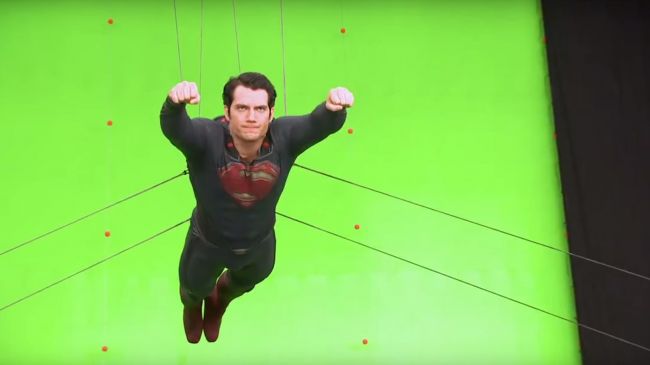

02 Nov GREEN SCREEN AND BLUE SCREEN-ARD 516
Chroma key compositing, or chroma keying, is a visual-effects and post-production technique for compositing (layering) two images or video streams together based on colour hues (chroma range). The technique has been used in many fields to remove a background from the subject of a photo or video – particularly the newscasting, motion picture, and video game industries. A colour range in the foreground footage is made transparent, allowing separately filmed background footage or a static image to be inserted into the scene. The chroma keying technique is commonly used in video production and post-production. This technique is also referred to as colour keying, colour-separation overlay (CSO; primarily by the BBC), or by various terms for specific colour-related variants such as green screen, blue screen and magic pink; chroma keying can be done with backgrounds of any colour that are uniform and distinct, but green and blue backgrounds are more commonly used because they differ most distinctly in hue from human skin colours. No part of the subject being filmed or photographed may duplicate the colour used as the backing, otherwise, the part may be erroneously identified as part of the backing.
It is commonly used for weather forecast broadcasts, wherein a news presenter is usually seen standing in front of a large CGI map during live television newscasts, though in actuality it is a large blue or green background. When using a blue screen, different weather maps are added on the parts of the image where the colour is blue. If the news presenter wears blue clothes, his or her clothes will also be replaced with the background video. Chroma keying is also common in the entertainment industry for visual effects in movies and video games. Rotoscopy may instead be carried out on subjects that aren’t in front of a green (or blue) screen. Motion tracking can also be used in conjunction with chroma keying, for example to move the background as the subject moves.


Green screen compositing, or more generally chroma key compositing, is a technique for combining two still images or video frames
Blue screen
Blue box (also known as: bluescreen, greenscreen, chroma key) – image processing technique, which consists in changing this option with the appropriate colors (originally blue, hence the name) with any image. Widely used on television (when presenting weather forecasts and news programs) and in film (to include actors in a computer-generated survey). The color also goes to blue or green as they are considered costumes and props.
Action
In digital video, color is named by three numbers, which denote the brightness of the color components (RGB). The blue box effect is obtained by simply comparing the numerical values at individual points in the recording with color 1. If the color matches (exactly or with some discrepancy), then the recording is replaced by an alternate background at that point.
Clothes
The person participating in the blue box recording cannot wear clothes of a similar color to the background, a new alternative version through an alternative image. Neither can he hold in such a case in such a case. You can use an invisible figure to make the medium, for example wearing an invisibility cap.




Sorry, the comment form is closed at this time.